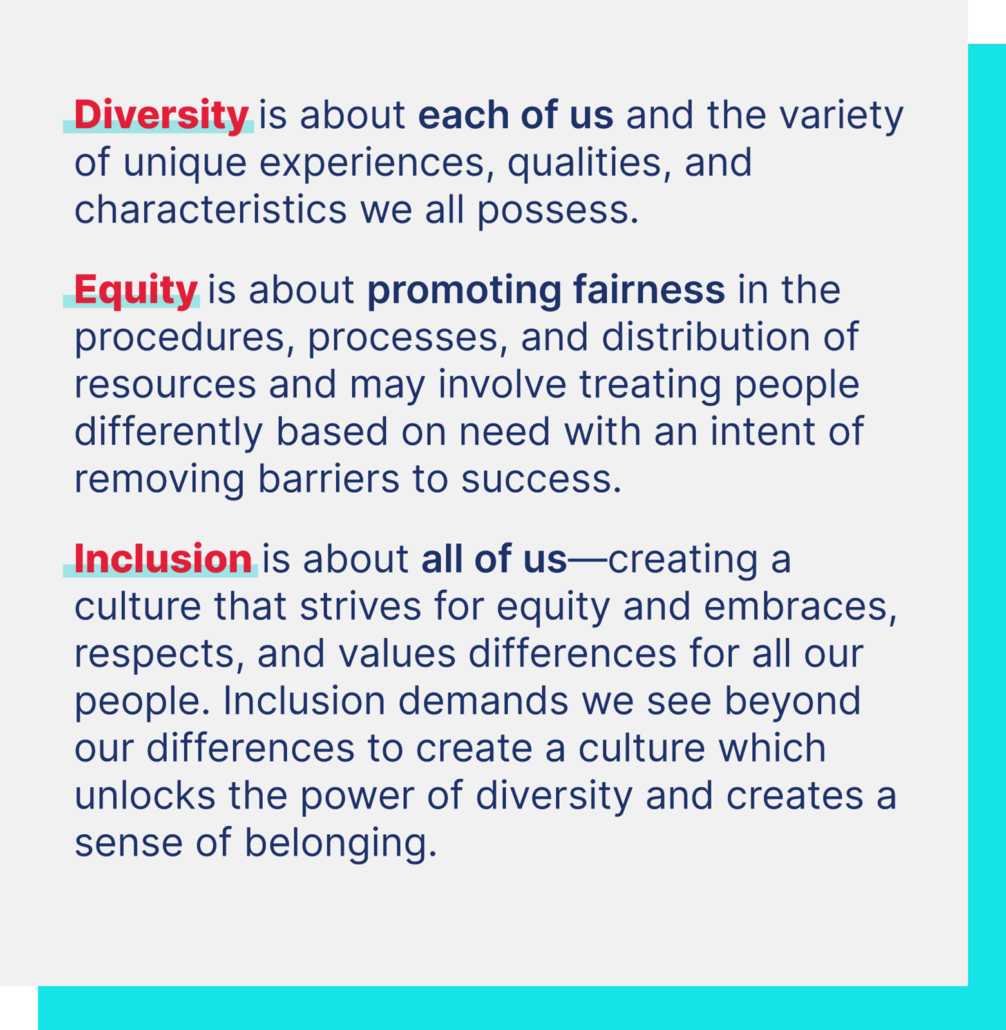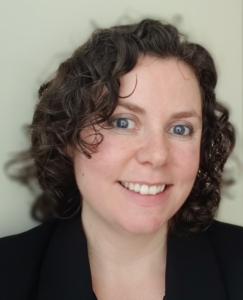
Fighting Systemic Racism and Social Injustice
Over the past year and a half, the world has witnessed multiple events that have shone a bright light on systemic racism and social injustice. These events have served as a catalyst to identify attitudes that contribute to these conditions and shift established mindsets towards creating new systems that result in increased diversity, equity, and inclusion (DE&I). At an organizational level, it is imperative that institutions revisit their culture, behavioral norms, operations, and structure to determine whether they promote and value diversity of stakeholders and thinking, provide a sense of belonging for all, and remove barriers to success. Achieving these goals will not only position institutions as leaders in their fields or industries but will also create a stronger and more effective culture in which all are valued and contribute to the best of their ability, resulting in better overall institutional outcomes.

This moral imperative has particular meaning for higher education institutions that have the opportunity not only to more effectively support and welcome all stakeholders and constituents, but also to actively influence the perspectives of their students who will shape the future. However, institutions face additional challenges when compared to organizations in other industries due to the complex and varied nature of the “communities” they impact and influence. To effectively address DE&I, colleges and universities need to understand and pay attention to the needs of all the communities they touch, including the various campus communities (e.g., faculty, staff, student, and alumni) and the non-campus communities (e.g., local area, regional, national, and global). To achieve true diversity, equity, and inclusion, institutions will need to develop and implement a strategy that uses a variety of tactics, including, but not limited to:
- Integrating lessons on anti-racism in curricula
- Implementing talent sourcing pipeline programs for the underrepresented
- Removing barriers to success and engaging broadly on DE&I issues within the local and regional communities
An effective strategy will require strong, top-down leadership commitment, while also emphasizing active engagement from across the organization.
The following provides a high-level overview on developing a strategy that supports colleges and universities on their DE&I journey.
Creating and Implementing Diversity, Equity, and Inclusion Strategy
Define Your Vision
The primary success factor in any cultural transformation effort is commitment from the top of the organization. This is especially true for the behavioral changes that are required to achieve DE&I objectives. To gain the commitment, the institution should work to both develop a clear and concise vision that aligns with the institution’s values and cultural goals, and to identify the relevant communities, stakeholders, and their needs. Particular attention should be paid to discussing barriers that prevent specific communities from engaging and performing at their best. The “why” behind the vision statement must also be articulated to ensure there is a common understanding for how activities align with the organization’s mission, values, and culture. An important part of “visioning” will also be to review and align the organization’s core values to the DE&I vision. As a sub-set of these activities, the institution should clearly define what “diversity,” “equity,” and “inclusion” means to them and their stakeholder communities (see above for suggested definitions).
Adopt a Commitment Statement
Once the vision is defined, leadership should then develop and adopt a clear and concise commitment statement to be shared broadly with their stakeholders. The statement should support a culture of belonging, removal of barriers, and leadership accountability. This declaration cannot stand by itself and requires an associated communication plan that must be coordinated with leadership across the institution to truly effectuate the change.
Create a Structure of Support
To ensure the appropriate structure is in place to support a robust DE&I vision, the institution may also need to review its existing organizational model. An effective model may be more—or less—centralized depending on the institution’s specific needs. For example, many organizations are creating a new Associate Vice President for DE&I role. This leader serves as the executive sponsor for the DE&I strategy and plans, and coordinates with other related entities as needed. This ensures that activities are executed in alignment with the vision, values, and the commitment statement. Further, higher education institutions may consider creating a “shared” leadership model where certain communities within the institution (e.g., schools within the institution) have their own DE&I champion to ensure that the specific needs of targeted stakeholder groups within the broader institution are met. Regardless of how centralized the DE&I organizational model is, colleges and universities should consider creating the structure needed to engage all voices across the enterprise. In this way, the organizational model includes both top-down and bottom-up structures, with appropriate feedback loops, to inform the DE&I journey.

Continue reading Part 2 here.
Learn about Attain Partners’ Inclusion, Diversity, Equality, and Allyship (IDEA) Performance Maturity Framework here.
For more information or to speak with one of our experts, please contact us here.
About the Authors

Reshma Patel-Jackson is a Senior Principal and the Practice Leader for the Management Consulting business of Attain Partners. She is responsible for and involved in a wide range of consulting initiatives, primarily on change management, strategic planning, business process improvement, organizational assessments, project management, and research administration. Mrs. Patel-Jackson is a Prosci® Certified Change Management Practitioner who has extensive knowledge and training in the field. She has provided strategic planning, project management, change management, internal audit, compliance, and costing services for a variety of not-for-profit, Higher Education, government contracting, and commercial clients.

Diane Scott is a Senior Consultant at Attain Partners and possesses over twelve years of experience supporting Higher Education. She is a process improvement professional with a demonstrated history of management consulting and client relationship management. Her detailed understanding of university business helps her support client needs related to strategy, business process improvement, and change management. She holds an MBA from the Georgetown-McDonough School of Business, is a certified research administrator (CRA), and is a Prosci® Certified Change Management Practitioner.










